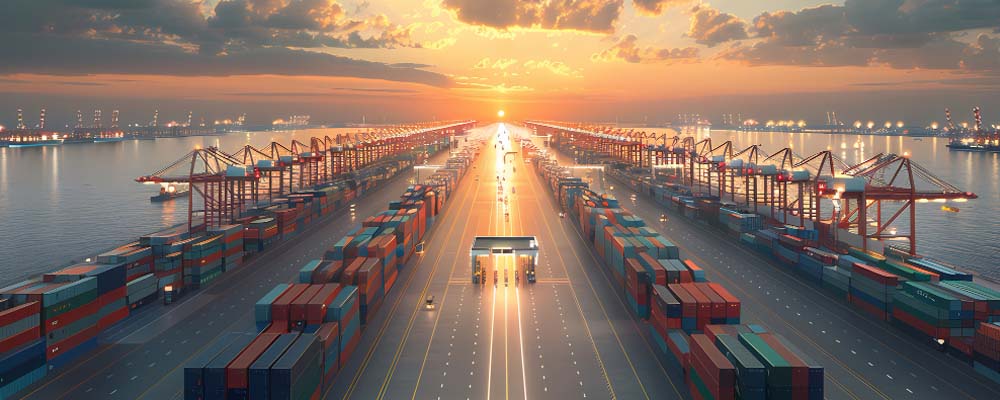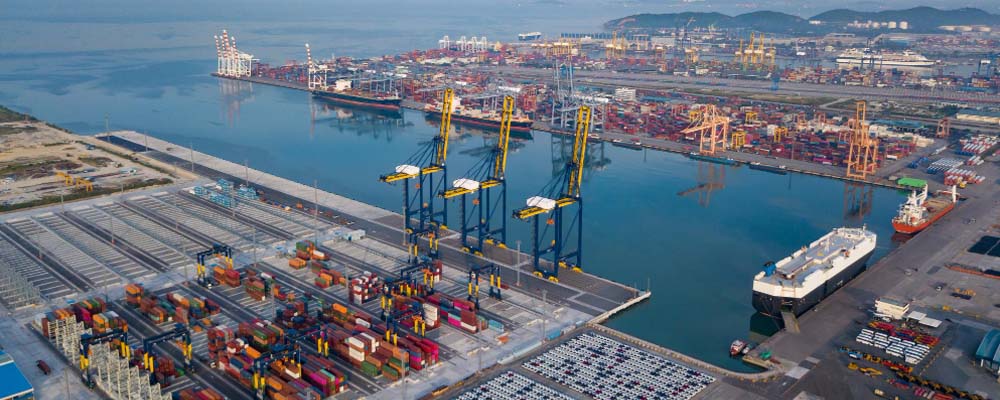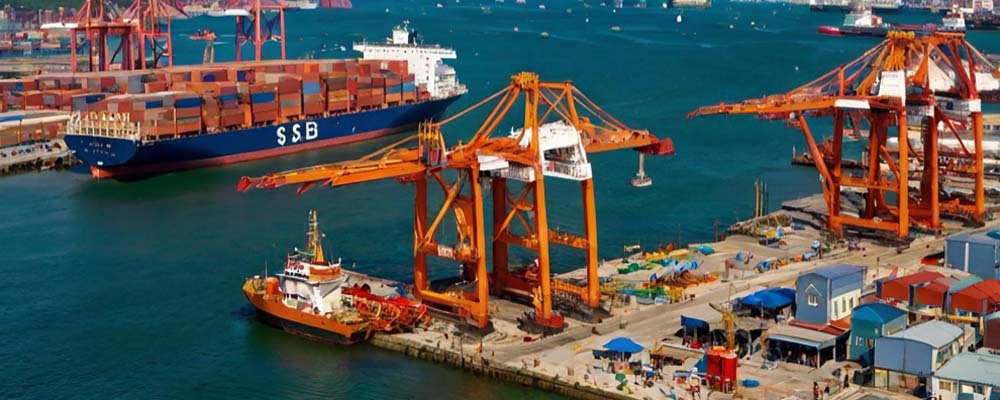
Mexico, as a leading Latin American economy, is crucial to global trade, acting as a strategic link between the Americas and world markets. Its ports are essential gateways for importers, exporters, and logistics providers, supporting industries from automotive to e-commerce. This article explores the top five major ports in Mexico, detailing their capabilities, geographic advantages, and insights to help freight forwarders, customs brokers, and manufacturers optimize their logistics operations in the region.
1. Port of Manzanillo
Overview and Location
Located in the state of Colima on Mexico’s Pacific coast, the Port of Manzanillo is the largest port in the country by volume. Recognized as a central hub for trade with Asia, particularly China and Japan, Manzanillo offers a strategic advantage for industries relying on the Pacific route for international shipments.
Key Capabilities
Manzanillo’s facilities support containerized cargo, bulk liquids, refrigerated cargo, and specialized project cargo. It boasts some of the country’s most advanced handling equipment, including cranes capable of handling post-Panamax vessels, which can significantly optimize loading and unloading times. The port’s deep-water access allows it to accommodate large vessels, which is essential for bulk cargo and large container shipments.
Advantages for Trade and Logistics
- Proximity to Industrial Centers: Manzanillo is near major manufacturing hubs like Guadalajara and Mexico City, reducing inland transportation costs.
- Streamlined Customs Processing: The port has advanced customs systems, which help reduce processing times and minimize delays.
- Strong Connectivity: Manzanillo is connected by rail and road, facilitating efficient distribution to central Mexico and beyond.
Considerations
Logistics providers should be mindful of congestion issues during peak seasons, as the port’s high volume can sometimes result in delays. Additionally, importers and exporters must navigate occasional restrictions imposed by local authorities, especially in terms of environmental compliance and customs regulations.
2. Port of Veracruz
Overview and Location
The Port of Veracruz on Mexico’s Gulf Coast is one of Latin America’s oldest and most significant ports. A primary gateway for trade with the U.S., Canada, and Europe, it has recently expanded and modernized its capacity and infrastructure.
Key Capabilities
With specialized terminals for containerized, bulk, and roll-on/roll-off (RoRo) cargo, Veracruz is equipped to handle a wide range of goods, from consumer electronics to vehicles. Its facilities are also capable of supporting perishable goods, benefiting from temperature-controlled storage areas and efficient cargo-handling technology.
Advantages for Trade and Logistics
- Automotive Export Hub: Veracruz is a leading port for automotive exports, particularly for cars manufactured in nearby factories.
- Increased Capacity with Recent Expansions: In 2019, Veracruz completed a major expansion, adding new terminals and deepening its water depth to accommodate larger vessels.
- Accessibility to North American Markets: With rail and highway connectivity to the U.S., the port provides efficient transportation solutions for businesses exporting to North America.
Considerations
Due to its high traffic volume, Veracruz faces occasional congestion issues, especially during peak import/export periods. To mitigate delays, it’s essential for importers, exporters, and freight forwarders to work closely with port authorities, tracking cargo schedules and anticipating peak times.
3. Port of Lázaro Cárdenas
Overview and Location
Located in Michoacán on Mexico’s southwest coast, the Port of Lázaro Cárdenas is one of the country’s largest and most versatile ports, strategically positioned to handle large-scale imports from Asia. Known for its expansive infrastructure and capacity, Lázaro Cárdenas is often considered an alternative to the Port of Manzanillo for businesses on the Pacific coast.
Key Capabilities
Lázaro Cárdenas boasts Mexico’s deepest natural harbor, capable of accommodating even the largest post-Panamax vessels. It’s well-equipped for handling a variety of cargo types, including containers, bulk cargo, and automobiles. Lázaro Cárdenas’ expansion of intermodal services strengthens its role in inland rail distribution, efficiently moving goods to central Mexican markets.
Advantages for Trade and Logistics
- Deep-Water Access: Ideal for large, ocean-going vessels that cannot dock in shallower ports.
- Intermodal Connections: The port has direct rail access to major cities, offering a cost-effective distribution option for domestic and international markets.
- Advanced Security Systems: Lázaro Cárdenas has implemented extensive security measures, making it one of Mexico’s most secure ports, which is particularly beneficial for high-value goods.
Considerations
While it offers high capacity and advanced infrastructure, the port has historically faced challenges related to cartel activities in the surrounding region. Many logistics providers mitigate this risk by maintaining strong security protocols and working with reputable local partners.
 4. Port of Altamira
4. Port of Altamira
Overview and Location
Situated in the state of Tamaulipas, the Port of Altamira is one of the fastest-growing ports on Mexico’s Gulf Coast. Positioned near the industrial hub of Monterrey and with close proximity to the U.S. border, Altamira has become a key gateway for both North and South American markets.
Key Capabilities
Altamira’s specialized terminals for containerized, petrochemical, bulk, and project cargo make it popular across industries from manufacturing to energy. Its advanced storage facilities support both hazardous and non-hazardous materials, ideal for importers handling sensitive products.
Advantages for Trade and Logistics
- Strong Petrochemical Focus: Altamira is particularly beneficial for businesses dealing with chemical and petroleum products due to its dedicated infrastructure.
- Strategic Proximity to Monterrey: The port’s close location to Monterrey enables quick transportation to one of Mexico’s most important manufacturing centers.
- U.S. Market Accessibility: Its proximity to the U.S. border supports efficient cross-border trade, ideal for companies exporting to or importing from the United States.
Considerations
The port is growing rapidly but still experiences bottlenecks during peak seasons, particularly with bulk cargo. Logistics providers should coordinate with Altamira’s customs offices to ensure compliance with local import/export regulations, especially for hazardous materials.
5. Port of Ensenada
Overview and Location
The Port of Ensenada in Baja California is a key trade link between Mexico, the U.S., and the Asia-Pacific. Its proximity to the U.S. border makes it ideal for industries needing quick cross-border access, making it a top choice for e-commerce and exporters to the western U.S.
Key Capabilities
Though smaller than other major ports, Ensenada specializes in handling containerized cargo, including refrigerated goods and seafood exports. Its terminal facilities accommodate a diverse range of products and benefit from efficient cargo-handling processes and advanced security measures.
Advantages for Trade and Logistics
- Proximity to the U.S.: Just 70 miles from San Diego, Ensenada offers quick access to Southern California, ideal for time-sensitive goods.
- Refrigerated Cargo Facilities: Ensenada has modern refrigerated storage facilities, benefiting businesses involved in agriculture and food products.
- Low Congestion: Ensenada experiences fewer delays than larger ports, making it ideal for companies prioritizing speed and reliability.
Considerations
Due to its size, Ensenada has limited capacity compared to larger ports. Companies shipping high volumes of goods may need to use it as a secondary port or combine shipments through larger ports like Manzanillo or Lázaro Cárdenas to meet demand.
Tips for Choosing the Right Mexican Port for Your Business
When deciding which Mexican port to use for shipping, businesses should consider a range of factors to ensure cost-efficiency, security, and timely delivery. Here are some tips to help in the decision-making process:
- Analyze Proximity to Key Markets: Choose ports close to your key markets and manufacturing hubs. For example. the Port of Altamira is ideal for northern industrial zones, while Manzanillo and Lázaro Cárdenas serve central Mexico effectively.
- Consider Cargo Type and Specialization: Each port has unique strengths. Veracruz excels in automotive exports, Altamira in petrochemicals, and Ensenada in refrigerated cargo. Match your cargo type to the port’s specialization.
- Evaluate Port Capacity and Traffic: High-traffic ports can lead to delays during peak seasons. Smaller ports like Ensenada offer quicker processing, while larger ports like Manzanillo handle high-volume shipments efficiently.
- Intermodal Connectivity: For efficient inland distribution, consider ports with strong intermodal links. Manzanillo, Veracruz, and Lázaro Cárdenas offer robust rail and road connections to major cities, helping reduce transportation costs.
- Security and Compliance: Verify that the port has robust security protocols, especially for high-value or sensitive goods. Lázaro Cárdenas, for example, is well-known for its advanced security measures.
 Conclusion
Conclusion
Mexico’s major ports are vital trade gateways for Latin America and global supply chains. Each port, from high-capacity Manzanillo and Lázaro Cárdenas to the U.S.-oriented Ensenada, offers unique advantages. For freight forwarders, customs brokers, and manufacturers, understanding these strengths helps optimize costs, boost efficiency, and enhance supply chain resilience. Mexico’s ports offer boundless opportunities, enabling importers and exporters to expand their reach. CONNECTA can guide you in navigating these options, helping you unlock the full potential of Mexico’s growing port infrastructure for a competitive edge in global logistics.




 4. Port of Altamira
4. Port of Altamira Conclusion
Conclusion



